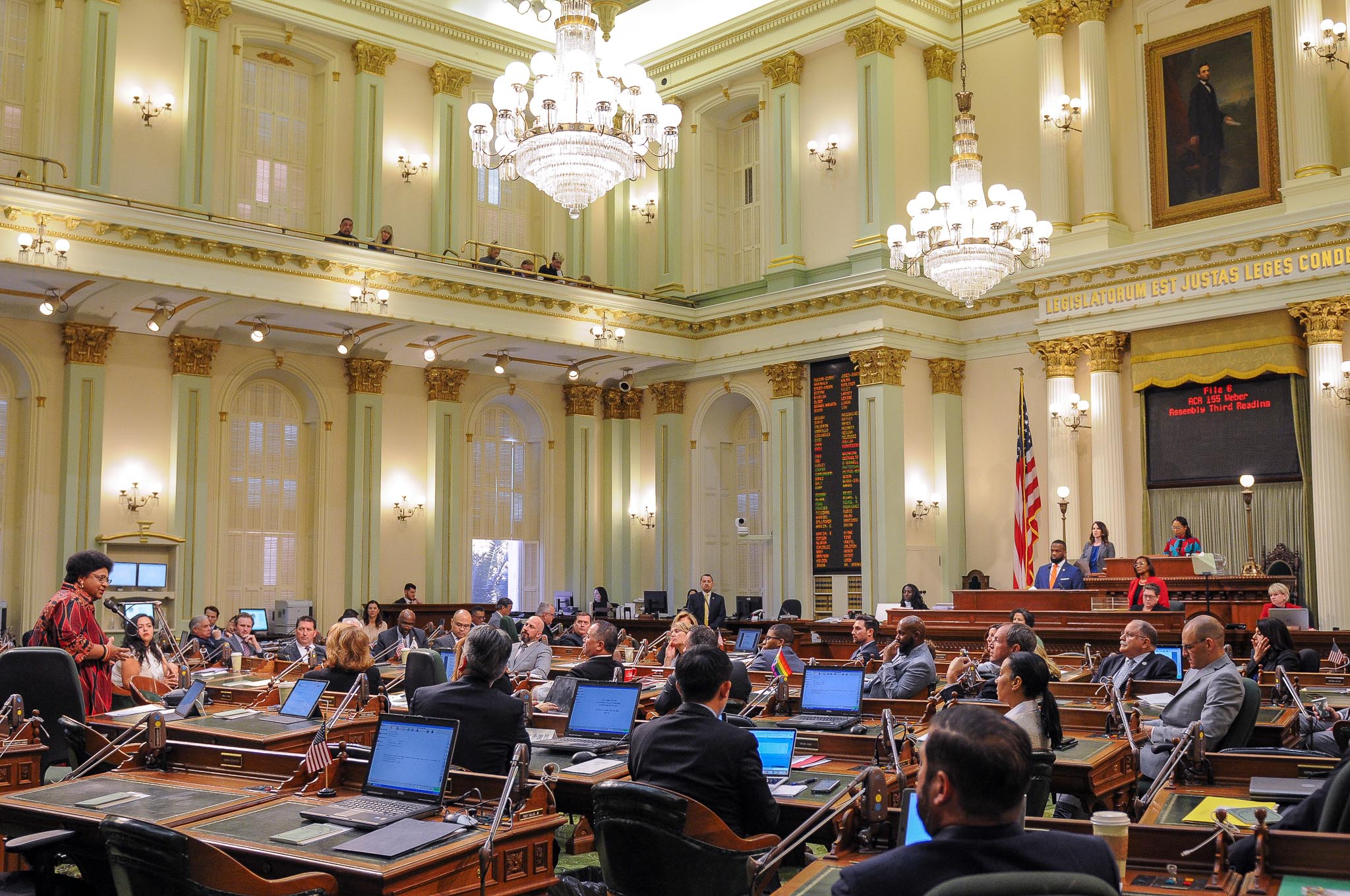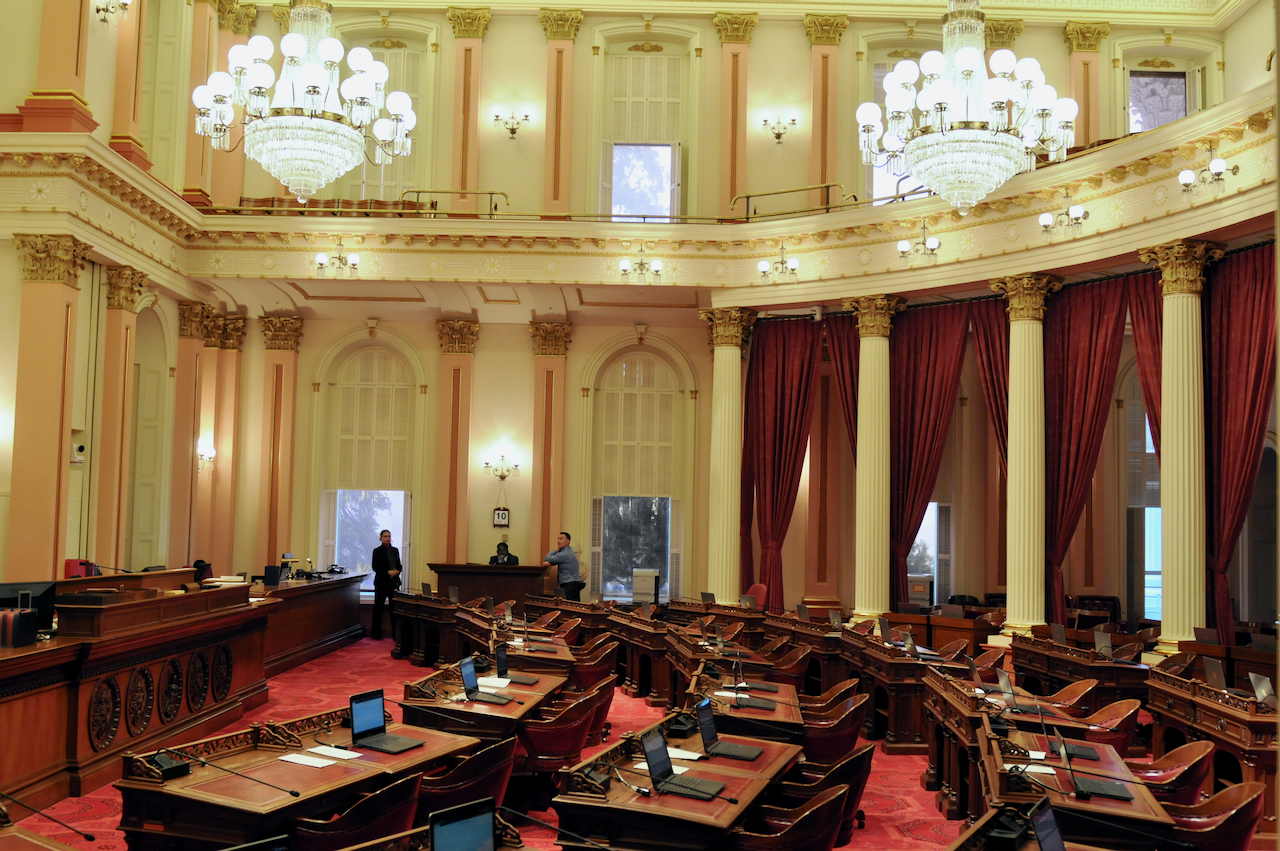
California State Capitol (Photo: Kevin Sanders for California Globe)
Should Legislative Statements Accompany Retroactive Law Changes?
Findings and declarations could provide factual information or value statements about the needed retroactive change in the bill
By Chris Micheli, January 10, 2024 6:25 am
A few times per year in the California Legislature, readers may see language that states “this act does not constitute a change in, but is declaratory of, existing law.” What is the purpose of this language and should these types of statements include legislative findings and declarations, or statements of legislative intent.
In a recently-introduced bill during the 2024 Legislative Session, the following language is contained in a plus section at the end of the bill:
The addition of Section 7923.611 to the Government Code made by this act does not constitute a change in, but is declaratory of, existing law.
Should a bill containing this type of provision include additional statements in order to properly set the stage for this type of language in a bill? My answer is an emphatic yes.
I believe the Legislature should include more than just its simple declaratory statement that the new act is declaratory of existing law. Instead, the Legislature should set the stage for the need to make the law change retroactive through one or more legislative findings and declarations. The findings could then follow with one or more legislative intent statements that make clear the purpose of the legislative language.
Findings and declarations could provide factual information or value statements about the needed retroactive change in the bill, or describe the problem the Legislature is trying to address and why the first statute needed clarifying language added to it. Then the legislative intent statement could specify the Legislature’s intended result.
Including these two types of statements would be helpful to address any potential legal challenge to the legislation because courts often consider these official statements of the Legislature. And, the Legislature could make clear why the bill is “declaratory of existing law.” We also know that legislative intent statements are important for providing an explanation to the general public, the regulated community, the executive branch, and the judicial branch.
As readers know, in most instances, legislation applies prospectively, meaning after the law has been enacted and takes effect. The ultimate determination as to whether any bill enacted by the California Legislature that is intended to be applied retroactively, will be made by a court of law in this state.
California courts have stated in prior, published appellate court decisions that, “[A] statute’s retroactivity is, in the first instance, a policy determination for the Legislature and one to which courts defer absent ‘some constitutional objection’ to retroactivity.” The basic rule in California is that “a statute may be applied retroactively only if it contains express language of retroactivity or if other sources provide a clear and unavoidable implication that the Legislature intended retroactive application.”
The California Supreme Court made the statement that “where a statute provides that it clarifies or declares existing law, ‘[i]t is obvious that such a provision is indicative of a legislative intent that the amendment apply to all existing causes of action from the date of its enactment. In accordance with the general rules of statutory construction, we must give effect to this intention unless there is some constitutional objection thereto’.”
California courts look to the text of the bill and legislative materials to determine whether the later enacted bill made a change in the law or whether the later enacted bill clarified existing law. If the bill represents a clarification of existing law, then the bill is applied to all instances, both retroactively and prospectively.
On the other hand, if the bill enacts a change in the law, then the court looks to determine whether the Legislature intended for the law change to be applied retroactively. In this regard, the court basically asks, did the Legislature make a clear intent to apply the amendment retroactively? Appellate courts in this state have explained: “[A] subsequent expression of the Legislature as to the intent of the prior statutes, although not binding on the court, may properly be used in determining the effect of a prior act.”
As a result, in my opinion, the best way for bills to “not constitute a change in, but be declaratory of, existing law” is for these types of bills to include legislative statements of intent, and even findings and declarations, in addition to the standard form language set forth above. I believe this approach will better ensure that such a “clarification” of existing law will be upheld by the courts in this state.
- California Department of Child Support Services - December 24, 2025
- Mistakes in Legal Pleadings - December 23, 2025
- The Division of Property Concerning Retirement Plan Benefits - December 23, 2025




